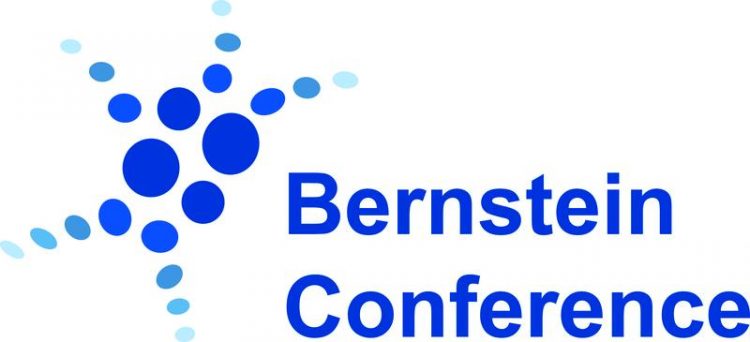Computers bridge the gap between theory and experiment in neuroscience

Bernstein Conference Bernstein Netzwork Computational Neuroscience
The human brain is nature’s most complex system. To understand its processes, computers have become indispensable. The annual Bernstein Conference in Germany provides one of the most important international platforms for scientific exchange in the field of computational neuroscience in Europe.
Be it physics, biology, chemistry or computer science, the major gain of the young field of computational neuroscience is to think and work beyond disciplines. To unravel brain function, the scientists use mathematical models, theories and computer simulations. Their topics range from information processing, perception, memory and brain-computer interfaces to neuroprosthetics and robotics.
Theoretical neuroscientists try, for instance, to answer the question of how decision making is realised in the brain. “Together with our colleagues in medicine and neurobiology, we can gain new insights from computer simulations of single neurons or entire neural networks,” says Professor Fred Wolf, main organizer of the conference and head of the Bernstein Center Goettingen.
“Computational neuroscience research also paves the way for applications in the medical field, for example in the development of intelligent prostheses, improved diagnostics of neurological diseases or in robotics and artificial intelligence.”
This year’s conference highlights are the public lecture given by Professor Niels Birbaumer and the award ceremony of the Bernstein Network’s Brains-for-Brains Award.
On September 13, Professor Dr Niels Birbaumer, a pioneer in the use of brain-computer interfaces for patients with neurological diseases, will talk about progress towards abolishing the locked-in state with brain-machine interfaces (BMI). Locked-in patients are conscious but they are unable to interact with their environment, both physically and linguistically.
Brain-machine interfaces can provide crucial aid for such patients. The public lecture will be given in German. It is open to the general public and free of charge. The lecture is brought to you with friendly support of the Otto Bock HealthCare Germany.
The winner of this year’s Brains-for-Brains award in computational neuroscience is Elise Rowe from Melbourne (Australia), a young researcher, who worked on analysing EEG signals of schizophrenic patients. After the award ceremony on Friday, September 15, she will talk about her current research.
This year, a special cinema evening precedes the scientific conference. It features the artist, author and filmmaker Benjamin Heisenberg and his award-winning movie Sleeper. Heisenberg, grandson of the Nobel Laureate, lays out a drama of love, rivalry and treachery in laboratory life – painting an intimate picture of a society unsettled in the aftermath of 9/11. Apart from several best movie awards, Sleeper won the Midas EuroPAWS award in 2005 as best cinematic drama set in science and technology.
Journalists are invited to the public events, the award ceremony and all other events of the conference.
The dates at a glance
For journalists
– Official Opening of the conference:
Wednesday, September 13, 1 pm, general lecture hall of the University of Goettingen, Platz der Göttinger Sieben 5, Göttingen
– Brains for Brains Award Ceremony with Elise Rowe, Monash University, Melbourne, Australia
Friday, September 15, 11 am, general lecture hall of the University of Goettingen, Platz der Göttinger Sieben 5, Göttingen
For journalists and the general public
– Cinema Bernstein: Schläfer/ Sleeper (2005, Original with subtitles), September 11, 7 pm, German Primate Center, Kellnerweg 4, Göttingen
– Public evening lecture by Professor Niels Birbaumer: „Gehirn-Maschine-Verbindungen: Wem nutzen sie?” (in German)
Wednesday, September 13, 8 pm, Alte Mensa, Wilhelmsplatz 3, Göttingen
The Bernstein Conference
The Bernstein Conference 2017 is organized by the Bernstein Center Göttingen. It is one of six Bernstein Centers in Germany. The Bernstein Conference is the annual meeting of the Bernstein Network Computational Neuroscience. It has become the biggest annual conference in this field in Europe.
Bernstein Network Computational Neuroscience
The Bernstein Network is a research network in the field of computational neuroscience; this field brings together experimental approaches in neurobiology with theoretical models and computer simulations. The network started in 2004 with a funding initiative of the German Federal Ministry for Education and Research to promote the transfer of theoretical insight into clinical and technical applications. Today, after more than 10 years of funding by the Federal Ministry, the Bernstein Network has over 200 research groups. It is named after the German scientist Julius Bernstein (1839-1917) who was the first to explain the propagation of nerve impulses.
http://www.bernstein-conference.de
http://www.zeit.de/wissen/gesundheit/2017-01/locked-in-patienten-niels-birbaumer…
http://EuroPAWS Award
https://en.wikipedia.org/wiki/Benjamin_Heisenberg
http://cordis.europa.eu/scienceweek/act_sw0413.htm
Media Contact
All latest news from the category: Event News
Newest articles

Silicon Carbide Innovation Alliance to drive industrial-scale semiconductor work
Known for its ability to withstand extreme environments and high voltages, silicon carbide (SiC) is a semiconducting material made up of silicon and carbon atoms arranged into crystals that is…

New SPECT/CT technique shows impressive biomarker identification
…offers increased access for prostate cancer patients. A novel SPECT/CT acquisition method can accurately detect radiopharmaceutical biodistribution in a convenient manner for prostate cancer patients, opening the door for more…

How 3D printers can give robots a soft touch
Soft skin coverings and touch sensors have emerged as a promising feature for robots that are both safer and more intuitive for human interaction, but they are expensive and difficult…





















